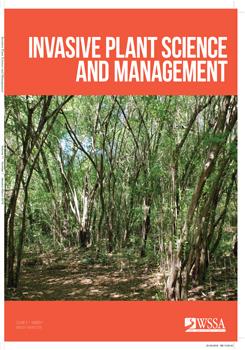Callery pear (Pyrus calleryana Decne.) was introduced to North America as an ornamental tree in the early 1900s. Due to widespread planting, P. calleryana has become common throughout the eastern United States and has invaded natural areas, especially disturbed areas. Prescribed fire is a common management technique in prairie ecosystems to mimic natural disturbances. We tested the effectiveness of prescribed fire as a control technique for P. calleryana in a managed prairie system. Fire top-killed all established P. calleryana individuals. However, these individuals responded to fire with 3 to 4 epicormic sprouts each. Similar sprouting behavior occurred in 2-yr-old seedlings. Exposed seeds, fruits, and 1-yr-old seedlings were killed by fire. Established P. calleryana were single-stemmed individuals before exposure to fire. After the prescribed fire, they all were multistemmed, which increased the potential flower-bearing stems within the prairie. We conclude that fire alone is not a suitable technique for managing P. calleryana invasion. Cut and herbicide application methods are labor-intensive. However, combining cut and spray methods with prescribed fire may be effective. Fire removes standing grass and forb biomass, leaving exposed P. calleryana stems, which would make locating individuals and directly applying herbicides easier.
How to translate text using browser tools
1 March 2018
Callery Pear (Pyrus calleryana) Response to Fire in a Managed Prairie Ecosystem
Adam R. Warrix,
Jordan M. Marshall
ACCESS THE FULL ARTICLE





